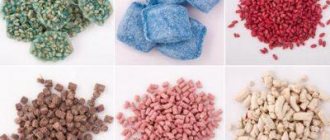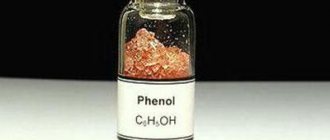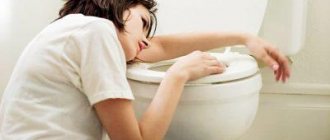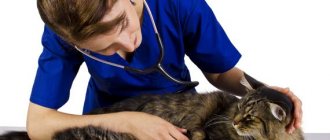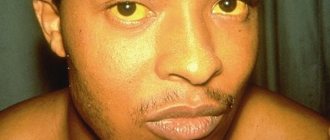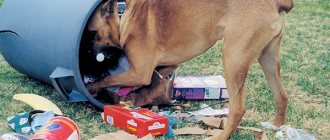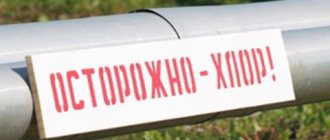Cats by nature are extremely active, playful and inquisitive. They strive to taste a lot, resulting in intoxication with various chemicals and other toxic substances. Food poisoning in purring cats is rare, which is a consequence of their picky eating and excellent sense of smell.
The most important condition for restoring the full health of a furry pet is the rehabilitation of cats after poisoning: the rehabilitation period plays no less important role than the treatment performed. Below we will answer the most frequently asked questions from cat owners about what to feed their pet after intoxication.
Why do you need to follow a diet after poisoning?
After certain toxins enter the digestive system, a cat develops a number of disorders. The animal cannot digest regular food, since enzymatic processes in the liver and pancreas are reduced, and the secretion of gastric and intestinal juices decreases. The mucous membrane of all parts of the digestive tract is irritated, and inflammation develops in some areas.
At the same time, a cat needs nutrients, vitamins, and minerals to restore strength. Therefore, the owner’s task during the recovery period is to provide the pet with easily digestible, safe and complete food.
Symptoms
Diagnosing poisoning in a cat is quite simple. Just watch her and know all the symptoms:
- The cat constantly lies down, does not play, does not hunt, and there is general weakness and lethargy. This is a common sign of any illness in your pet. If such behavior is not typical for him, then the above is a reason to think about the health of your pet.
- Diarrhea, vomiting, difficulty swallowing for the cat.
- Increased salivation. This leads to a lack of appetite. The pet may also not drink water for a long time.
- Shortness of breath, shortness of breath. Another common sign of malaise.
- Increased body temperature.
- Cardiopalmus.
- Behavior change. It may be different here, but you will definitely feel the change. During poisoning, a pet may lie and not move or, on the contrary, be extremely agitated.
- The cat begins to tremble and may experience convulsions.
Even if one of the above symptoms is observed, you should think about treating your cat, as this indicates that the pet is feeling unwell.
Rules for feeding a cat after poisoning
In the first two to three days of illness, the food should be liquid or pureed. Give it in small portions, focusing on the cat’s appetite. You should not give your animal dry food, as solid particles will injure the mucous membrane of the digestive tract.
There is no need to feed the cat immediately after vomiting, as this may provoke a new attack . Give water and any drink after an attack with caution. Food is prepared several times a day, for 1 - 2 feedings. The food offered should be slightly warmed or at room temperature. Do not give your cat cold or hot food.
How should a cat's diet be structured after poisoning? The diet is followed for 1 – 2 weeks. Then, depending on the severity of intoxication and the pet’s well-being, the pet is transferred to a regular diet or medicated food.
First day
A fasting diet is recommended for 24 hours after the first attacks of vomiting and diarrhea. For kittens, the duration of the fast is 12 hours. This is necessary to relieve the liver and pancreas, which are the first to suffer in case of poisoning. Digestion of food is a process that requires intense work of all organs. Therefore, a fasting diet gives the body time to cope with the first onslaught of toxins.
During this period, the animal is given only water and oral rehydration solutions to drink. To remove residual poison from the gastrointestinal tract, the veterinarian may prescribe intestinal enterosorbents, gastric lavage, and a cleansing enema.
Caring for a cat after food poisoning consists not only of proper feeding, but also of providing it with a secluded place. It should be warm, quiet and dark.
In case of severe intoxication, the animal is given drips with saline and glucose. This maintains water balance in the body, provides the necessary energy to cells and enhances the elimination of poison in the urine. To increase urine output, your veterinarian may prescribe diuretics.
Feeding on the second - third day
After a starvation diet, the animal is offered liquid food and broth. Sometimes they focus on the pet’s well-being - you can feed the cat 8-10 hours after the vomiting and diarrhea stop.
First, give a small amount of food (a teaspoon or a tablespoon). After 2 - 3 hours, give a few more spoons. Then the pet is offered to eat every two hours.
Products that can be fed to a cat in case of poisoning in the first period.
- Rice water or liquid rice porridge. A small amount of rice is washed and boiled in plenty of water. They give you the decoction itself or liquid pureed porridge.
- Broths are prepared from lean meats. Before feeding, it is recommended to additionally remove fat accumulated on the surface.
- On the third day, they give boiled chicken, turkey, and rabbit meat. It is ground in a meat grinder or blender.
- After introducing meat to the menu, you can diversify the porridges. They give you boiled and pureed buckwheat and liquid rolled oats.
- Boiled and pureed vegetables are gradually introduced into the cat's menu - carrots, pumpkin, cauliflower, broccoli.
- Instead of meat, you can feed your cat canned meat for baby food. They also use various vegetable purees in jars or bags.
When cats are poisoned, they often lose their appetite.
If the cat has not shown interest in food after a daily fast, there is no need to force feed it . Contact the veterinary clinic. The pet will require intravenous infusions.
Try to interest the animal in its favorite food or create conditions for food competition. To stimulate your appetite, you can add a little fresh meat juice to the bowl. You can top your diet menu with gravy from your favorite canned food. Smell is very important to a cat, so it is not necessary to give a large amount of “tasty” food.
Ready-made dietary food for cats
There are special premium foods available for sale for cats with digestive problems. They can be recommended for feeding a pet after poisoning:
- Hill's (Hill's I/D for food poisoning, Hill's L/D for toxic liver damage, Hill's K/D for kidney damage);
- Royal Canin (Gastro Intestinal for diseases of the digestive system, Hepatic for liver support):
- Purina Pro Plan,
- Almo Nature,
The cat's diet should consist entirely of ready-made food. You cannot add natural food to it. A mixed diet has a bad effect on restoring the digestive function of the body.
Switching to a regular diet
Three days later the following is added to the menu:
- low-fat cottage cheese;
- boiled egg;
- fresh kefir (if there is no diarrhea);
- low-fat unsweetened yogurt;
- Ground beef;
- boiled sea fish of low-fat varieties.
On the fifth – seventh day, the cat is gradually transferred to its usual food. The transition is carried out over several days, replacing dietary foods with regular ones.
A cat's recovery from rat poisoning takes a long time. During this period, the animal should receive vitamin K. Some fatty foods should be added to the diet: butter or vegetable oil, chicken skin. Fat promotes good absorption of vitamin K.
Mistakes when organizing feeding
First of all, you should think about how well the feeding is organized. One of the following problems may be occurring.
The cat is vomiting because he has eaten too much
If the owner does not follow the manufacturer's recommendations on feeding standards, the cause of vomiting in the cat may be simple overeating. Practice shows that most of us tend to underestimate the nutritional value of dry foods: they seem light and “frivolous”, which means that you need a lot of them to satiate. Reasoning in this way, owners sometimes exceed the daily norm several times, without thinking about the consequences.
If the pet is not prone to overeating, he simply leaves the excess in the bowl until the next meal. However, not all cats show such moderation: some of them are ready to eat and eat until they feel that their stomach is full to capacity.
Once in a humid environment, food particles swell significantly, which causes heaviness in the stomach and vomiting. To avoid this effect, you should adhere to the dosages recommended by the manufacturer, and also divide the daily amount of food into at least two equal parts, one of which is given to the cat in the morning, the other in the evening.
The cat swallows food particles too quickly
Even those owners who feed their pet strictly according to the norm may encounter this problem. Often, this behavior of a cat is due to competition (if he is not alone in the house) or a period of forced malnutrition he has experienced.
If your cat is vomiting after dry food and you notice that he is eating too quickly, try following these rules:
- feed him separately from other cats and dogs, in a quiet place where children do not run around and no one disturbs him;
- buy a bowl equipped with ridges that slow down the absorption of food;
- reduce the volume of a single portion using more feedings.
Abrupt transfer to another brand of food
If your cat is vomiting from new dry food, it is possible that the change is too drastic. It is not for nothing that there is a recommendation that a new product should be introduced gradually, mixing it with the old one over a week or two. The problem is especially relevant when there is a significant difference in the composition of diets: for example, one consists mainly of cereals, and the second - of meat. Obviously, the latter is better, but the cat’s enzymatic system needs time to adapt to the absorption of animal protein in large quantities.
Dry food is expired or spoiled
If a cat is vomiting from dry food, it is necessary to exclude this cause. If the packaging is still intact, check the expiration date written on it. Even if the date is normal, the food can still be spoiled due to non-compliance with storage conditions: in an excessively warm or humid room, in light, in an open bag. Carefully inspect and smell the food: mold, rancid or sour odor of the granules indicate their unsuitability for feeding a cat. In this case, it is safer to throw away the entire package and open a new one.
To avoid encountering spoiled food in the future, be careful when purchasing it:
- check the expiration dates and keep in mind that a large package cannot be consumed quickly by one cat (it is advisable to use the food within 3 months after opening);
- Do not buy dry food in bulk or in damaged packaging, even if they are offered at a big discount.
Unsuitable dry food
It is rare, but it happens that completely benign dry food is simply not suitable for a cat, causing so-called food intolerance. An additional manifestation of this condition is stool disorder. In this case, the problem really lies in the contents of the bowl. But please note that the cause of vomiting is not all dry food, but its individual component. Typically a source of protein. By choosing a diet that does not contain the problematic ingredient, you can continue feeding your cat dry food without any problems.
Dry food was given along with another product
It is quite possible to provoke vomiting in a cat if you mix dry food with natural products, the digestion of which proceeds differently. For example, the breakdown of raw meat requires a more acidic environment and a longer period of time than the digestion of dry food, the proteins in which are denatured. Milk also interferes with the normal passage of feed through the gastrointestinal tract, since most adult cats do not have enough of the appropriate enzyme to digest it.
Mixing two incompatible foods stops the digestive process. Undigested food lingering in the stomach is regarded by the body as a potential threat, and it rushes to get rid of it. Therefore, if a cat vomits after feeding, dry food should not be mixed with anything.
Features of feeding kittens and cats
Unfortunately, both small kittens and nursing cats can become poisoned.
What should a kitten be fed if it is poisoned?
General principles are followed, but with minor adjustments for age:
- Kittens under 10 months of age are prescribed a 12-hour fast.
- Give water little by little, so as not to cause vomiting, 10-15 drops, up to 1 ml at a time.
- The frequency of feeding a kitten depends on its age. Healthy babies switch to regular meals twice a day at the age of 4 - 6 months. In case of poisoning, it is recommended to give the kitten food every 4 hours.
Diet for a nursing cat
During lactation, a cat requires 2–3 times more energy. If a nursing cat is poisoned, you can feed the following foods:
- milk, preferably goat's;
- cottage cheese;
- rice and oatmeal porridge;
- boiled lean meat;
- red fish.
It is recommended to wean kittens if they are already well fed. Due to illness, a cat may lose milk - you need to be prepared to feed the kittens artificially.
Feed a nursing cat often, every two hours . After a few days, the number of feedings can be reduced and correlated with the suckling of the kittens.
Treatment methods
After establishing the reason why the kitten is vomiting, it is necessary to immediately begin treatment. In most cases it is possible at home, although in severe cases a clinical setting may be required.
Simple Home Remedies
It is not difficult to treat a kitten for vomiting that began due to overeating or unusual food. The basic method is to put him on a fasting diet for a day or half a day (depending on age), giving him water, often, but little by little. If the vomiting stops, you can feed the kitten medicated food, rice water or lean meat, and then switch it to regular food.
If treated well, stress in animals goes away quickly. Usually within a few days they get used to the diet in a new place. To prevent vomiting from recurring, the owner must protect the animal from unhealthy and age-inappropriate food and feed it in small portions, several times a day.
Problems with hair in the stomach usually go away on their own. The kitten masters the “washing” technique and stops suffering from lumps.
Treatment of more complex cases
If the owner finds threatening signs, he should call a veterinarian. He will examine the animal, do tests if necessary, find out the exact reasons why the kitten is vomiting, and prescribe a course of treatment. Which one will depend on the circumstances .
- In case of poisoning, antidotes may be required.
- If the cause is an infection, the doctor will prescribe antibiotics and indicate the specifics of their use.
- For gastritis, gastroprotectors (like smecta) are needed.
- Infection with parasites will require anthelmintic medications.
In some cases, replenishment of fluid loss is required (a dropper with saline solution), as well as antispasmodics (papaverine or others). You must strictly follow the veterinarian’s advice, and buy medications only at a veterinary pharmacy; “human” medications are not suitable for a kitten.
Experienced cat lovers know well what to do if a kitten vomits. They also know the role of prevention in preserving his health (vaccinations, timely administration of anthelmintics). Beginning cat lovers should theoretically prepare before a kitten appears in the house.
Prohibited Products
Even a healthy cat should not be given:
- potatoes;
- sour cream;
- full fat milk;
- tomatoes, eggplants;
- sausages;
- bones;
- legumes;
- sweets;
- baking.
Fish are fed no more than once a week. It is unacceptable to add oil, salt, or spices to your cat’s food.
There is no need to give milk to a cat if it is poisoned. In general, milk is not recommended for animals older than three months. This is due to poor digestibility of lactose by adults.
In case of poisoning, the following foods are temporarily excluded from the diet or the foods allowed for the cat are limited:
- fatty fish;
- pork;
- raw meat;
- offal;
- canned meat and fish;
- pearl barley, semolina, barley, corn porridge.
- fruits, berries.
Rehabilitation of a cat after poisoning is a long process that requires adherence to the diet prescribed by the veterinarian. The first few days the menu is limited to rice water and broths. In the future, in order to avoid chronic diseases of the digestive system, the basis of the diet should be lean meat, rice, buckwheat, and boiled vegetables.
How quickly a pet recovers from an illness depends not only on the treatment, but also on the quality of therapy during the recovery period. Every pet owner is likely to encounter poisoning of varying severity.
The recovery period after poisoning involves strict monitoring of the pet's condition, combating intoxication, dehydration and diet. Let's figure out how to properly feed a cat after poisoning.
Natural Products for Vomiting in Cats
Processing makes food easier to digest. The meat is freed from fatty layers, boiled in pieces, chopped in a blender, and served with broth. Vegetables and cereals are boiled in water or meat broth and pureed.
The diet includes foods that are easy to digest:
| Can: | It is forbidden: |
|
|
Often the cause of repeated vomiting is food intolerance; it occurs when there is a lack of enzymes to process food components; you can verify this after transferring your pet to a monoprotein diet. One type of meat and cereal that is unfamiliar to the pet is left in the diet for 9–12 weeks. If the urge stops, the usual food is gradually returned and the cat’s well-being is monitored. Products are administered once every 2 weeks; if vomiting occurs after trying the next dish, it is excluded from the diet.
General information about poisoning and rehabilitation
The first and only principle that is a priority during rehabilitation is “do no harm.” You need to understand that the actions you take for good can also cause harm.
Choosing a diet after poisoning is a very individual matter. It is known that poisoning is usually divided into types:
- Food – the cat was poisoned by what she ate. In this case, the walls of the intestines and stomach are irritated or damaged. The main symptoms are vomiting and diarrhea, decreased body temperature, and in advanced situations, convulsions and coma. Poisoning by poisons refers to food poisoning.
- Non-food - the cat was poisoned after contact with something. This includes inhalation of vapors and gases, the effects of contact poisons, and fumes of any nature. The first symptoms of this type of poisoning affect the liver and nervous system. There is disorientation, convulsions, changes in the color of the mucous membranes, disturbances in the functioning of the heart and metabolic processes.
In the case of non-food poisoning, diet is not that important. If the toxins do not leave the cat's blood as soon as possible, it will simply die. In case of poisoning by contact poisons, gases and vapors, antidotes, oxygen and maintaining circulation become more serious priorities.
In food poisoning where diarrhea is a symptom, the main problem is dehydration. When vomiting and diarrhea, the mucous membranes of the cat’s digestive system work much more actively; they literally pull all the water out of the body for only one purpose - to cleanse themselves. When a cat’s body does not have enough water, the following complication comes into force - a violation of water-salt metabolism, and then inhibition of metabolism.
In the acute stage of food poisoning, the cat should be on a starvation diet ; the pet really only needs water. Any food that gets into the stomach and intestines will cause even greater irritation of the mucous membranes... which will only worsen the condition. During diarrhea, the cat's intestinal mucous membranes swell and become more sensitive. Food can damage tissue by scratching it. While the pet’s body is in a state of acute poisoning, there is a high probability of infection of damaged areas of the intestine, bleeding and worsening intoxication.
Self-diagnosis
The appearance of vomiting and the behavior of the kitten cannot make a final diagnosis, but the owner can assess the general condition of the animal and make a preliminary decision on its treatment. If something changes later, the decision may need to be revised.
Encouraging signs
You don’t have to worry too much and limit yourself to home treatment if the following easily noticeable signs are observed:.
- The kitten vomited undigested or poorly digested food once - this happens from overeating.
- The kitten behaves actively, does not refuse water and food, and no additional symptoms are observed.
- It was possible to see fur in the vomit.
- The kitten recently arrived in the house and vomiting is not accompanied by a refusal of water, convulsions, or an increase in temperature - most likely, the unusual diet is to blame. It’s worth analyzing it and asking the cat’s owner what kind of food the kitten previously needed.
It is almost certain that if such symptoms are present, the vomiting will stop quickly and there will be no consequences. If the symptoms persist, the help of a veterinarian will still be required.
Threatening symptoms
But there are signs when it is better to immediately seek advice from a specialist..
- A kitten vomits blood - a sign of mechanical damage to the esophagus or stomach or severe internal pathologies.
- Vomiting occurs repeatedly, and bile is present in the mass (it is yellow) - serious disturbances in the functioning of the liver and bile ducts are possible.
- There is white foam in the vomit - this may indicate infection.
- Worms were found in the mass - they should be removed immediately.
- Vomiting is accompanied by diarrhea - a sign of poisoning.
- A kitten refuses to eat and does not drink - a threat to life, whatever the reason.
- Vomiting is accompanied by convulsions, apathy, and fever.
Yes, kittens can vomit (just like children) for minor reasons, “in the mood.” But, if the owner notices at least some threatening signs, he should immediately begin to treat the animal, because otherwise it may be too late.
First aid for poisoning
If your cat is poisoned, you need to think not about what to feed it, but how to reduce the level of intoxication. Most often, cats in a state of acute poisoning refuse to eat and there is no need to force them to eat fermented baked milk or broth!
An adult cat can go without food for up to 20–24 hours , a kitten under 10 months of age. can fast (without harm to health) for up to 12 hours. To prevent your pet from suffering from thirst, he needs to be constantly offered warm water. A volume of water of 10–15 drops will not cause gagging or provoke vomiting.
If your pet is dehydrated, you can add salt to the water . Salt water increases thirst and is better retained in the body. Salt water can be replaced with Ringer's solution, which contains not only salts, but also trace elements that help maintain water-salt metabolism.
In the first hours after food poisoning, it is important to give the cat absorbent substances. Even in your home medicine cabinet you will find activated carbon or similar preparations. After eliminating acute symptoms, it is important to support the body, namely:
- Do everything to prevent dehydration.
- Give cats medications that coat the walls of the stomach and intestines to eliminate their irritation.
Basic rules for feeding a cat with vomiting
It is difficult to independently understand the reasons for the regular rejection of food in a cat. Vomiting occurs as a symptom of a host of serious diseases, but it also happens in a healthy cat due to accumulations of hair, overeating, eating food quickly, stress, intolerance to certain foods or food.
If it is not possible to take the animal to the clinic, first aid is provided at home. Food is removed for 12–24 hours; it provokes new urges and does not have time to be absorbed. Liquid also does not stay in the stomach, but the losses need to be replenished. The pet is given water from a pipette in small portions every hour or a NaCl subcutaneously in the withers area.
At the end of therapeutic fasting, the cat’s well-being is assessed. Urgent veterinary care is required if the nausea does not stop, the temperature rises, the cat remains lethargic and withdraws. When health improves, when the urges are reduced and no other negative symptoms appear, the pet is transferred to a gentle diet:
- Portions are reduced by half, but fed more often, 4–5 times a day.
- Products are thermally processed, raw and fried foods are removed so as not to provoke another urge.
- The pet is fed food with a mushy consistency. In this form, it envelops the inner walls of the stomach, facilitating the absorption of nutrients.
- Animals on ready-made food are transferred to therapeutic lines for cats with gastrointestinal disorders.
- Follow the drinking regime: until the urge completely stops, drink from a syringe without a needle or pipette every 2 hours.
If an intolerance to food components is suspected, the cat is placed on an elimination diet, as with a food allergy.
Feeding and rehabilitation
Keeping a cat on a fasting diet for more than 24 hours is not recommended. What to do if a day has already passed, but vomiting and diarrhea have not yet stopped? There are several options:
- At home, your cat can be given rice water (the water in which the rice was cooked) or the cereal itself, well boiled and crushed until smooth.
- In a clinical setting, the cat is given IV drips with nutritional and vitamin solutions.
- As a first feeding attempt, you can try special liquid food for weakened animals.
8–10 hours after vomiting and diarrhea have resolved, the cat can be offered warm, low-fat broth. After the cat drinks the broth, you need to monitor its condition for several hours. If the symptoms have not worsened, after a few hours the cat can be offered some boiled meat mixed with boiled rice.
If you feed your cat industrial liquid food for weakened animals, it is better to exclude natural products (except broth). After diarrhea, cats' intestinal walls are very irritated, and a mixed diet can make the situation worse.
With a natural diet, the cat's appetite must be encouraged. The best appetite stimulant is smell. You can try eating with your cat; all animals feel the urge to eat when they see someone else eating. For every piece you eat, no matter how small, generously praise the cat, gently stroke it, and express your joy as clearly as possible. Emotional stimulation is very important for a pet recovering from surgery.
Do not use spices or salt to stimulate your appetite.
If you suspect that food refusal is due to its lackluster odor, it is better to mix the food with commercial cat food for rehabilitation.
Most cats that survive poisoning experience significant weight loss. If your cat is obese and has lost some weight, there is no need to introduce any additional sources of carbohydrates into the diet. If your cat has lost muscle mass and appears weak, the following can be considered as additional sources of energy :
- Cereals – buckwheat, rice. Boil the porridge well and grind it until smooth. Can be cooked in water or broth.
- Broths from oceanic fish varieties. Sometimes veterinarians prescribe fish oil to cats as an immune stimulant, but after diarrhea this measure is not always appropriate.
- Homemade cottage cheese mixed with milk (if the cat is not lactose intolerant) - cottage cheese is made using calcium chloride. If your cat is lactose intolerant, the curds are not squeezed out completely so that they are liquid and diluted with whey.
- Hard unsalted cheese - some cats love cheese very much and eat it even if they don’t feel well. You cannot feed a cat only cheese after poisoning, but using the treat as a stimulus for appetite is quite appropriate.
- Baby food with milk or meat - read the ingredients carefully; it is not advisable for the treat to contain sugar. It is best to avoid eating vegetables and berries during the rehabilitation period after poisoning.
Important nuances of the diet
In the first days after poisoning and throughout the entire rehabilitation period, it is not recommended to give your cat dry food. Granules can scratch the irritated walls of the intestines and stomach, which will lead to a deterioration in the pet’s general condition, the resumption of diarrhea and the inflammatory process.
If your cat is accustomed to industrial food, drying should be replaced with pate, semi-moist canned food or liquid food intended for the recovery of animals after illness.
It is advisable to take all measures to ensure that the cat begins to eat natural food. In parallel with the diet, it is advisable for the pet to undergo a course of medications with probiotics. If your cat drinks homemade yogurt, it is better to stock up on starter culture and give it every day. It is important not to forget about water, which must be constantly available. If your pet is not eating well, you can replace the water with a glucose solution; it has a sweetish taste.
After poisoning, it is important to adhere to the following principles:
- Less, but more often - offer your pet food once every 1-2 hours in small portions (1-1.5 teaspoons).
- Easy to digest - all foods should be easily and quickly digested.
- Attractive aroma – a cat’s appetite depends on how attractive the food smells. You can add commercially canned gravy to natural food if your child is used to the food.
- Food should be fresh, prepared for 1-2 feedings. Try not to cook a lot. A cat’s sense of smell is much sharper than yours; it understands very well whether the product being offered to it is fresh.
- Warm food – cold food has almost no smell, which means it will not be appetizing to the cat.
If your cat categorically refuses to eat for more than 5 hours after diarrhea and vomiting have stopped, be sure to contact your veterinarian.
Do not force-feed your pet without a doctor's prescription, since refusal of food can be associated with severe damage or even perforation of the intestinal walls.
Because of their curiosity, pets often sniff objects or lick foods that may be laced with toxic substances, putting them at risk of poisoning. When the doctor provides veterinary care, the question arises: what to feed the cat after poisoning during the rehabilitation period?
When to see a doctor
A veterinarian's help may be needed in the following situations:
- vomiting does not stop during the day;
- apathy occurs;
- the pet becomes inactive;
- loss of appetite;
- stool is disturbed.
In order not to put the cat’s health and life at risk, at the first serious symptoms it is important to immediately contact a veterinarian, determine the main causes of vomiting and malaise, and select an effective treatment. After all, high-quality food, healthy sleep and the love of the owner are the most important things in the life of every cat.
Liked? Please rate the article!
General information about poisoning and rehabilitation of cats
After the prescribed rinsing or other treatment, it is necessary to take care of a detoxification diet, proper care of the pet and proper drinking regimen.
Poisoning is divided into two types:
- Non-food. The animal has been in direct or indirect contact with toxic objects, substances contaminated by rodents or poisonous insects.
- Food.
In the first case, diet does not always help - the nature and degree of poisoning are important. If toxic fumes or liquids are not removed in time, the pet may die.
For non-food poisoning, the best methods are to maintain blood circulation, oxygenate the body, and use antidotes.
In the second option, in case of severe poisoning, the animal is prescribed a starvation diet. Food that gets into the digestive tract will upset the balance and begin to irritate the mucous membranes (scratch and damage them), creating new problems.
Causes
In case of food poisoning, the cause may lie in the animal’s eating behavior. Cats often do not even chew their food, but swallow it whole, or catch and eat poisoned rats and mice. The poison can enter the body when the pet licks itself.
- contact poison contact with skin;
- vapors, gases;
- insect bites;
- fumes
Some toxic substances are odorless, so the animal may not smell them, or not pay attention to the bite of some harmless midge or a drop of poison that gets on the fur or skin. The following symptoms of intoxication may occur:
- convulsions;
- heart rhythm disturbances;
- disorientation;
- decreased metabolic rate;
- fainting.
Symptoms and signs
Poisoning in cats is rare. Animals have good olfactory qualities, so they rarely eat a toxic substance. However, intoxication cannot be ruled out. The signs and symptoms of poisoning are not difficult to recognize; any owner should know them.
- The animal exhibits weakness, apathy, and lacks the desire to play;
- Signs of indigestion appear - diarrhea, vomiting, difficulty swallowing;
- Salivation increases, appetite disappears;
- Violation of the respiratory process, heavy inhalations and exhalations;
- Increased pulse, heartbeat;
- Temperature increase;
- Presence of convulsive manifestations;
Any owner notices that the animal’s behavior has changed. When a cat is poisoned, it becomes apathetic or the pet becomes agitated.
Intoxication in cats can be food or non-food. In the first case, a toxic substance enters the animal’s body. Non-food poisoning is diagnosed upon contact with any substance - carbon monoxide, toxic liquids. In such a case, other organs suffer, not the esophagus.
Medicines after poisoning
A typical continuation of intoxication is dehydration, disruption of the kidneys, digestive and nervous systems, and heart. A pet that has suffered from poisoning experiences complete apathy and the animal becomes weaker. The natural effect is lack of appetite.
Although medical recovery can be carried out by the cat's owner, it is advisable to consult with a veterinarian about the medications used. Most medications are necessary to eliminate fluid deficiency.
When treating yourself, experts recommend starting with injections (subcutaneous) of Ringer-Locke solution, heating the product to 38 ° C. The drug is often mixed (in a ratio of 8:1) with 40% glucose and administered orally. Medicines for dehydration are injected at the withers 2-3 times a day, 40-50 ml. The total dose of the administered drug is 150–180 ml/day.
Solutions are effective in cases of intoxication:
To eliminate hemorrhages and bleeding that occurred after poisoning, Dicinon is injected intramuscularly into the animal every 6 hours for 4–5 days. The approximate dose per 1 kg is 12.5 mg of the drug. The medicine reduces and eliminates bleeding. Pyridoxine (vitamin B6) and internal paste Enterosgel are widely used in the treatment of isoniazid poisoning.
Heptral or Hepatovet will help restore liver function, and in case of cardiac disorders resulting from poisoning, you can use Cordiamin, camphor, caffeine, etc. Due to the strong effect of the drugs, you must first consult a veterinarian.
Special dry food for vomiting in cats
Veterinary lines for animals with digestive problems are developed to reduce the load on the gastrointestinal tract and include dry and wet food. They use 1-2 protein sources; The ingredients are carefully processed to make them easier to digest. For the first 3 days, it is better to give the cat semi-liquid food, soften the granules in water.
The following types are suitable for restoring digestion:
- Animonda Integra Protect Adult Intestinal includes hydrolyzed chicken protein and gluten-free cereal - rice. The product has a good composition of minerals: their ratio prevents the formation of sand in the urinary organs. The increased sodium and potassium content compensates for the losses. Prebiotics FOS and MOS support healthy microflora. Fish oil helps strengthen the coat.
- Forza10 Intestinal Active is created from fishmeal. MOS lactoenzymes and prebiotics help restore the gastrointestinal mucosa. The products contain useful phytocomponents: chestnut extract, rose hips and plantain - a source of natural polysaccharides.
- Monge Vet Solution Gastrointestinal contains freeze-dried pork and salmon protein. Cereal crops are replaced by cassava and potatoes; useful additional components include taurine, horse chestnut extract, and dried melon pulp.
- Royal Canin Gastro Intestinal GI 32 is made from dehydrated poultry protein, which is further processed to make it easier to digest. A reduced amount of fat reduces the load on the pancreas. Prebiotics, psyllium seeds, Omega-3 fatty acids accelerate the recovery of the digestive system.
- Trovet Hepatic HLD is recommended for liver diseases that are accompanied by vomiting. Sources of animal protein include lamb and pork, carbohydrates include corn and rice, the amount of L-carnitine and taurine is increased.
When choosing food, it is better to consult a veterinarian and adhere to the recommended daily diet:
| Name | Cat body weight | Daily norm |
| Animonda Integra | 2 | 40 |
| 3 | 45 | |
| 4 | 60 | |
| 5 | 75 | |
| 6 | 80 | |
| 8 | 90 | |
| 10 | 120 | |
| Forza10 | ≤ 2,5 | 25 – 35 |
| 2,5 – 3,5 | 35 – 45 | |
| 3,5 – 4,5 | 45 – 60 | |
| 4,5+ | 60+ | |
| Monge | 2 | 32 |
| 3 | 43 | |
| 4 | 65 | |
| 5 | 65 | |
| 6 | 85 | |
| 8 | 98 | |
| 10 | 115 | |
| Royal Canin | 0,5 – 1 | 15 – 20 |
| 0,9 – 2,3 | 20 – 33 | |
| 2,3 – 3,2 | 33 – 41 | |
| 3,2 – 4,5 | 41 – 60 | |
| 4,5 – 6 | 60 – 98 | |
| 6 – 7,3 | 98 – 120 | |
| Truvit | 2 – 3 | 35 – 50 |
| 3 – 5 | 50 – 70 | |
| 5 – 7 | 70 – 90 |
Medicinal food is used from 1 week to 3 months, depending on the condition of the cat. The daily norm is distributed over 3–4 feedings.
Proper nutrition
After providing first aid to the cat, it is necessary to reduce the level of intoxication, for example, give water with dissolved activated carbon.
Some individuals do not eat for some time after poisoning: there is no need to force feed your pets - this can cause pain and irritation.
For the first 24 hours, animals should fast and drink only water. To induce thirst, the liquid is added with salt. This procedure will cleanse the body of the effects of poison and help restore lost functions. During this period, you should try giving your cat honey (no more than 1 teaspoon 3-5 times a day) to raise its tone.
The next day, the animal can be fed as usual. It is recommended to prepare porridge, which will gradually restore the lining of the intestines and stomach and help stimulate the digestion process. Porridge is cooked from elm bark (pre-grinded) in skim milk. Add a little honey for tone.
Some toxins quickly dissolve in artificial and animal fats, so during the recovery period there is no need to give your pet food and drinks containing them (for example, milk, lard) - this can slow down the cleansing of the liver.
If there is rat poison or pesticides (phosphorus-containing substances) in the body, food with a small amount of vegetable fats is allowed. Food should be light and gentle. It is advisable to adhere to these recommendations for 1.5–2 months. Then they switch to their usual diet.
The menu requires the presence of the following low-fat products:
- chopped and well-cooked rabbit or poultry meat;
- boiled vegetables;
- kefir;
- cottage cheese.
- fatty fish;
- canned food;
- semolina, corn porridge and barley;
- potato.
What you can do:
- Buckwheat and rice groats. They are used to cook porridge and grind it into puree before serving.
- Homemade low-fat cottage cheese, provided that the cat tolerates lactose normally.
- Pieces of unsalted cheese in small portions are used to stimulate appetite.
- You can give your cat baby food made from meat, without sugar.
Dry food is not given to cats during the first days of recovery. Hard granules irritate the inflamed mucous membranes of the stomach and intestines. It is better to replace such food with pates or wet food.
If a cat does not eat, it is not recommended to force it to eat. However, if you have a long-term lack of appetite, it is better to go to the hospital.
What to feed a kitten if it is poisoned? In babies, the digestive tract is not fully formed, so negative reactions develop faster. In case of intoxication of kittens, the same procedures are carried out, feeding is carried out in the same way, but in smaller dosages. It is better to include more fermented milk products and less meat in your diet.
[custom_ads_shortcode2]
Drinking regime
In the first days after poisoning, the cat should drink a lot. First you need to give a solution of baking soda. If the animal does not want to, you must forcefully open the cat’s mouth and inject liquid with a syringe without a needle - this is necessary to rinse the body.
It is better to place bowls of water everywhere so that the pet has access, but you need to control how much liquid is drunk. Excessive water consumption sometimes causes severe vomiting and diarrhea.
It is necessary to feed the animal with solutions of mucous substances:
It is recommended to give the cat decoctions:
Preventive measures
Compliance with preventive measures will avoid the problem of indigestion of food. What to do?
- The pet should always have access to clean water, especially if the diet is dry;
- You shouldn’t skimp on your pet’s health; its stomach needs high-quality nutrition. It is better to give him premium food;
- It is better to divide feeding into 4-5 times in small portions, so the cat will not overeat;
- worm your pet regularly, as worms and parasites also interfere with digestion;
- it is also necessary to choose the right food in accordance with the breed, age and condition of the pet;
- Be sure to regularly visit the veterinarian and carry out preventive vaccinations.
Important! You cannot give your pet medications or treatment on your own without a doctor’s recommendation. The owner may incorrectly determine the diagnosis, and attempts to save the pet will only hasten its death.
Properly feeding a cat after poisoning is a necessary condition for a quick recovery. Of course, it is best to get detailed recommendations from your veterinarian. But there are times when medical help is unavailable, or the owner has dealt with the pet’s minor illness on his own. What to feed the cat? What foods should not be given to an animal?
